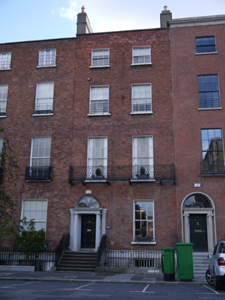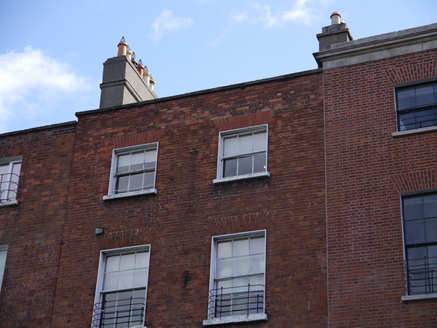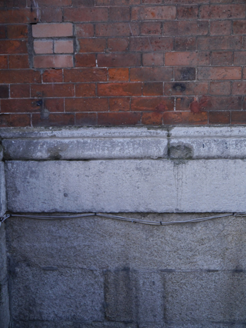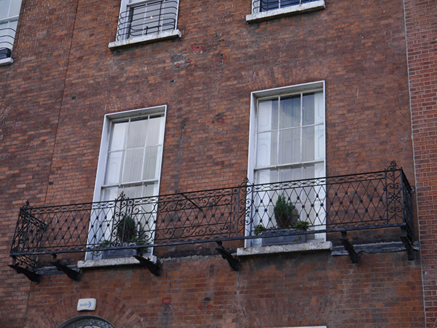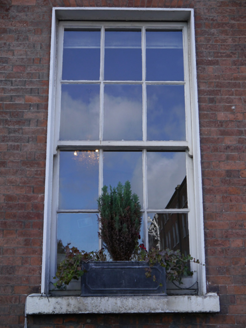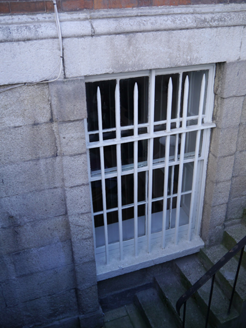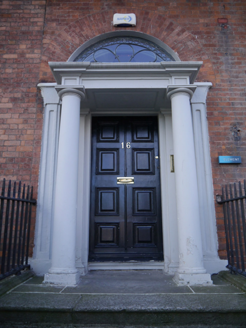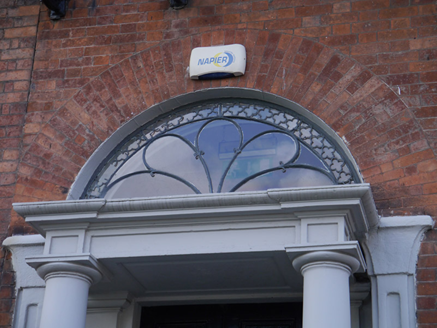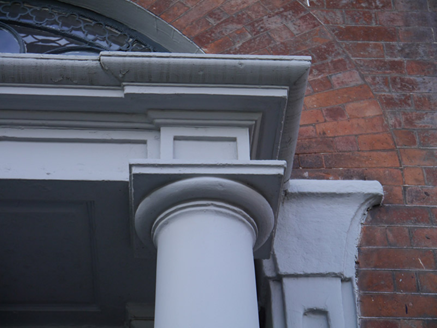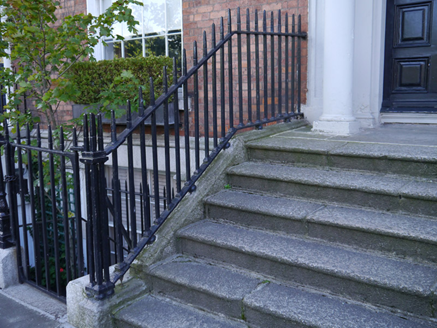Survey Data
Reg No
50930127
Rating
Regional
Categories of Special Interest
Architectural, Artistic
Original Use
House
In Use As
Office
Date
1815 - 1825
Coordinates
316554, 232981
Date Recorded
24/09/2015
Date Updated
--/--/--
Description
Attached two-bay four-storey over basement former townhouse, built c. 1820, with two-storey return to rear. Now in use as offices. Pitched slate roof, with V-profiled roof to rear (east) span which is hipped to east, concealed by refaced brick parapet with granite coping. Rendered chimneystacks to party walls with lipped clay pots, yellow to south and red to north. Parapet gutters. Red brick walling laid in Flemish bond over coursed ashlar granite walling to basement beneath granite plinth course. Square-headed window openings with brick voussoirs, patent reveals and granite sills. Iron guard rails to second floor, continuous decorative iron balconette to first floor and cast-iron grille affixed to basement sill. Largely six-over-six sliding timber sash windows, three-over-three to third floor with convex horns, ogee horns to ground floor and eight-over-eight to basement with granite surrounds. Round-headed door opening to principal elevation with brick voussoirs and decorative petal fanlight over square-headed door opening with panelled engaged pilasters flanking prostyle portico with moulded cornice and panelled frieze carried on engaged pilasters and Doric columns on plinth stops, framing raised-and-field timber door with beaded-muntin. Granite entrance platform approached by six bull-nosed granite steps, flanked by iron railings over granite plinth, enclosing basement to south. Masonry steps and iron handrail to basement level. Coal-hole cover to pavement. Two-storey modernised mews building to rear plot. Eastern boundary on Lad Lane bound by square-headed vehicular opening with rendered moulded head flanked by ashlar granite piers affixed with steel-roller shutter. Roughly squared and coursed limestone wall with granite coping abuts to north, having square-headed door opening with granite lintel over recent timber door.
Appraisal
Mary Bryan (2006) suggests that No. 16 was built for the Rev. Kelly, Fellow of Trinity College. The Doric porticoed doorcase with its petalled fanlight is particularly unusual. Although largely homogeneous in character and form, the subtle variations between terraces are indicative of the speculative nature of the Square’s development. Laid out in 1791 by the surveyors J & P Roe, Fitzwilliam Square was the last of the city’s Georgian squares to be completed. Development was staggered, progressing slowly until after the Napoleonic Wars and Waterloo, and between 1816-22 the vast majority of houses were completed on the eastern side of the square.

